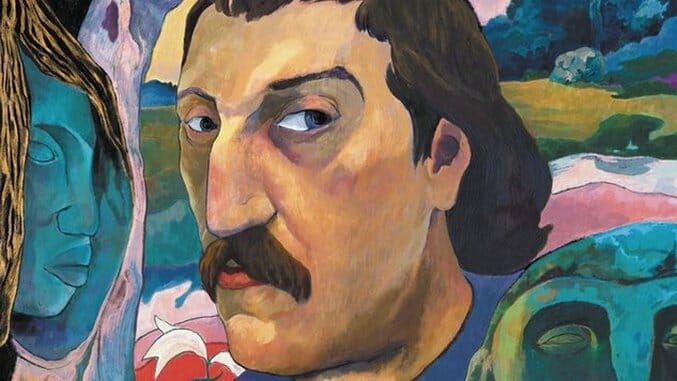Fabrizio Dori’s Gauguin: The Other World Finds Dreamy Symbolism in its Unpleasant Subject
Art by Fabrizio Dori
Writer/Artist: Fabrizio Dori
Translator: Edward Gauvin
Publisher: SelfMadeHero
Release Date: March 14, 2017
Following last year’s Munch by Steffen Kverneland, SelfMadeHero has released the next entry in its line of artists’ biographies in comics form. Each one, whether on Picasso, Van Gogh or Dali, comes from a different cartoonist with a different approach; Fabrizio Dori doesn’t seem to have been obsessed with his subject in the way that Kverneland was, and this book is slimmer than its predecessor, but the result is still readable and interesting. He starts from a defensive posture: if most people know anything about Gauguin other than that he spent some time in Tahiti and got a late artistic start in life, it’s that he was a jerk with an unpleasant personality who abandoned his family to shack up with young island women. It’s not entirely untrue! He and Van Gogh lived together for a while, and there’s a theory that Gauguin was directly responsible for the other painter’s mutilation. Even if that’s not factual, they fought furiously, and those disagreements with others were common for Gauguin. So how do you keep people reading?
-

-

-

-

-

-

-

-

-

-

-

-

-

-

-

-

-

-

-

-

-

-

-

-

-

-

-

-

-

-

-

-

-

-

-

-

-

-

-

-











































